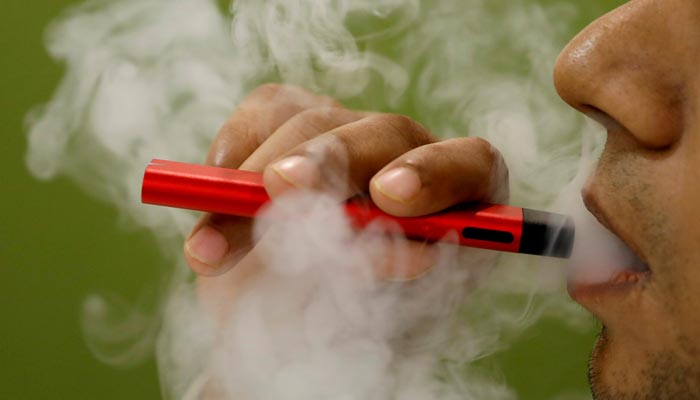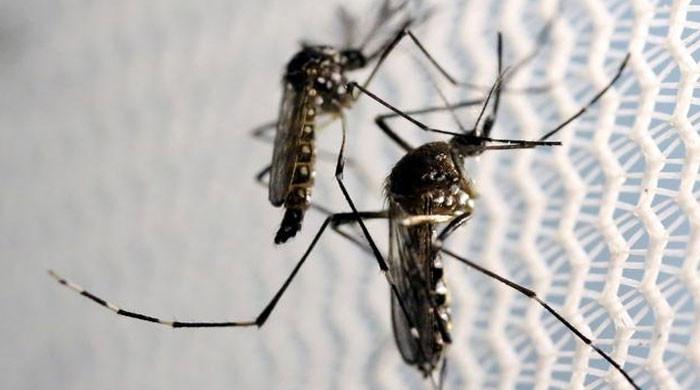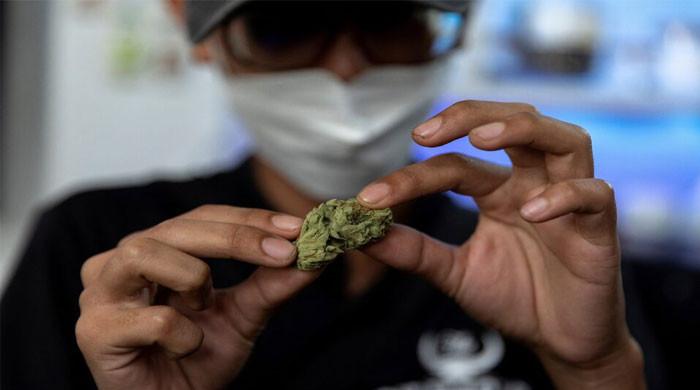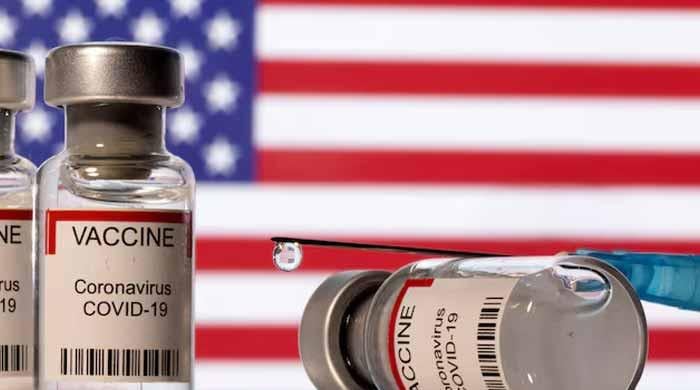WHO warns of rising vaping among Pakistani youth
Global tobacco use declines from 33% in 2000 to 19.5% in 2024, while Pakistan remains far from meeting global target of 30% reduction, says WHO
October 08, 2025

As global smoking rates decline to their lowest level in decades, the World Health Organisation (WHO) has warned that the use of e-cigarettes and heated tobacco products is rising among young people in Pakistan.
In its latest report, the WHO attributed the surge to gaps in marketing regulations and the lack of national standards governing the sale and promotion of these products, The News reported on Wednesday.
The WHO Global Report on Trends in Tobacco Use 2000-2024 and Projections 2025-2030 shows that while global tobacco use has declined from 33% in 2000 to 19.5% in 2024, Pakistan remains far from meeting the global target of a 30% reduction by 2025.
Tobacco use among Pakistani men remains among the highest in the region, and the rapid rise of vaping threatens to undo years of progress in tobacco control.
The report found that over 1.2 billion people worldwide still use tobacco, with men accounting for more than 80% of all users.
In Pakistan, around 30 million adults are tobacco users, and about 160,000 die each year from smoking-related diseases such as lung cancer, heart disease, and stroke.
WHO data also show that the use of smokeless and oral products such as gutka, naswar, and paan remains widespread, contributing to rising cases of oral and throat cancers across the country.
Public health experts say the tobacco industry is exploiting regulatory gaps to market e-cigarettes and nicotine devices in attractive packaging and flavours aimed at teenagers. Shops and online stores openly sell vaping liquids in fruit and mint flavours without health warnings or sales restrictions.
"These devices are being promoted as safe alternatives to cigarettes, but they are just new ways of hooking a new generation," said a senior official in the Ministry of Health. "Nicotine addiction at a young age increases the risk of lifelong dependency and serious lung injury."
The WHO warns that Pakistan's lack of clear regulation for vaping and heated tobacco has allowed these products to spread unchecked, particularly in urban areas.
Recent surveys show that nearly one in 10 Pakistani teenagers aged 13 to 15 has used a tobacco or vaping product, while experimentation rates are even higher among college students.
The global health body observes that the tobacco industry has shifted its focus from traditional cigarettes to new nicotine technologies to maintain profits, targeting youth through social media and influencer marketing.
Despite being a signatory to the WHO Framework Convention on Tobacco Control, Pakistan has yet to implement uniform taxation, plain packaging, or strong advertising bans. Cigarette prices remain among the lowest in South Asia, and enforcement of smoke-free laws is inconsistent.
Meanwhile, the government has no policy framework for regulating e-cigarettes, even as their use among teenagers continues to rise.
“Tobacco is also an environmental hazard,” said Dr. Saima Saeed, Head of Pulmonology and Director of the Lung Health Programme at the Indus Hospital and Health Network. “Farming and processing tobacco contribute to air pollution through deforestation and the release of harmful substances, while smoking pollutes the air around both smokers and bystanders. For a holistic approach, we need to promote safer agricultural practices to protect both Pakistan’s health and environment.”
The WHO report says that while global adult tobacco use is expected to drop slightly further to 19.2% by 2025, progress remains uneven. Many countries in South-East Asia and the Americas are on track to meet reduction goals through higher taxes, plain packaging, and public awareness campaigns. But Pakistan, along with several others in the Eastern Mediterranean region, has made little progress.
Experts warn that unless Pakistan acts swiftly to regulate vaping products, raise taxes, and curb tobacco marketing, the country risks a new wave of nicotine addiction among its youth. “We are losing ground to a more sophisticated form of the same addiction,” Dr Saima said.
“If we fail to close these gaps, Pakistan will face another generation of nicotine-dependent young people and an even heavier health burden in the years ahead,” she added.









